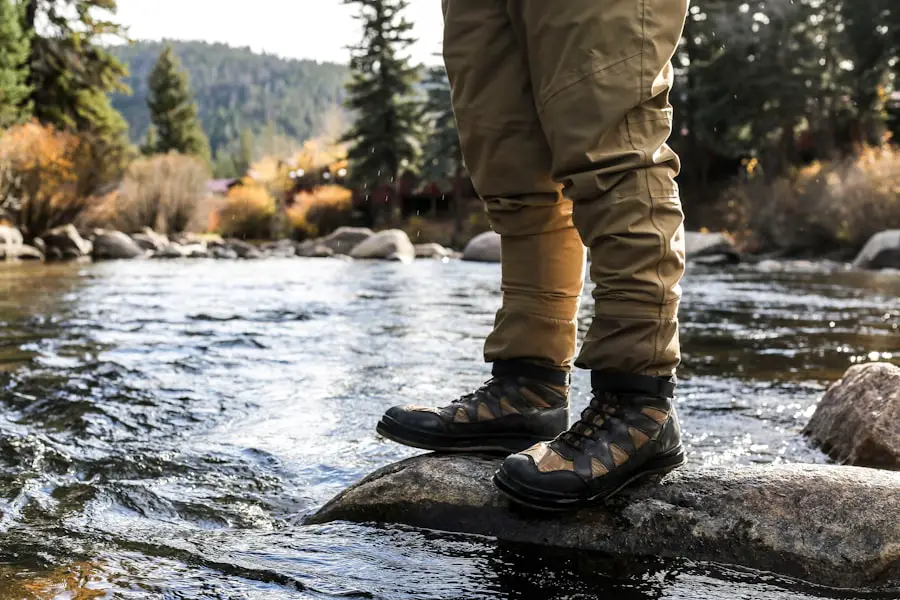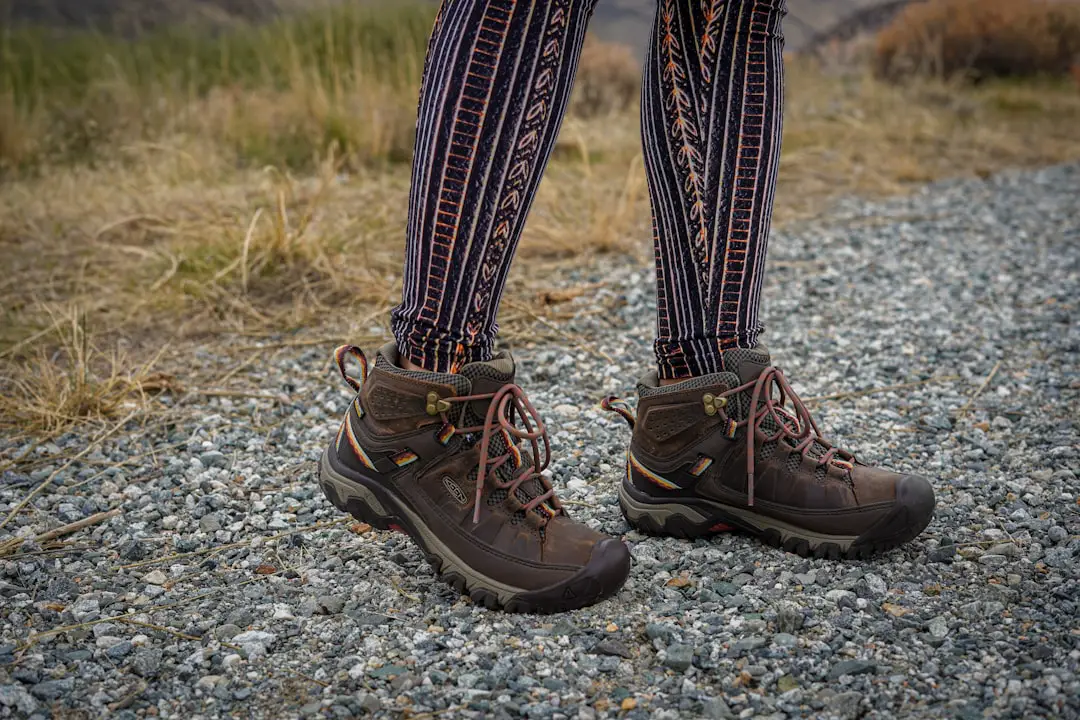Hiking shoes are an essential piece of gear for anyone who enjoys exploring the great outdoors. They serve as the foundation for a successful hiking experience, providing the necessary support, traction, and protection needed to navigate various terrains. Whether you are trekking through rocky mountain paths, traversing muddy trails, or walking along sandy beaches, the right pair of hiking shoes can significantly enhance your comfort and performance.
The evolution of hiking footwear has led to a diverse range of options, catering to different types of hikers and their specific needs. The importance of selecting the appropriate hiking shoes cannot be overstated. Poor footwear can lead to discomfort, blisters, and even injuries, which can quickly turn an enjoyable hike into a painful ordeal.
With advancements in technology and materials, modern hiking shoes are designed to offer superior performance while ensuring that hikers can tackle challenging environments with confidence. Understanding the various types of hiking shoes available and their unique features is crucial for making an informed decision that aligns with your hiking style and preferences.
Key Takeaways
- Hiking shoes are essential for providing support and protection while trekking through various terrains.
- Key features to look for in hiking shoes include waterproofing, traction, ankle support, and breathability.
- Top brands and models for comfort and support include Merrell Moab 2, Salomon X Ultra 3, and Keen Targhee III.
- Tips for finding the right fit include trying on shoes in the afternoon, wearing the same socks you would wear while hiking, and testing for proper toe room.
- Investing in quality hiking shoes provides benefits such as durability, comfort, and injury prevention during outdoor adventures.
Key Features to Look for in Hiking Shoes
When selecting hiking shoes, several key features should be considered to ensure optimal performance and comfort. One of the most critical aspects is the shoe’s sole. A good hiking shoe should have a durable outsole made from rubber or a similar material that provides excellent traction on various surfaces.
The tread pattern is also important; deeper lugs can grip uneven terrain better, while a flatter sole may be more suitable for well-maintained trails. Additionally, a midsole that offers cushioning and support is essential for absorbing impact and reducing fatigue during long hikes. Another vital feature to consider is the shoe’s upper material.
Hiking shoes can be made from leather, synthetic materials, or a combination of both. Leather offers durability and water resistance but may require more break-in time. Synthetic materials tend to be lighter and more breathable, making them ideal for warmer conditions.
Waterproofing is another consideration; many hiking shoes come with waterproof membranes that keep feet dry in wet conditions while allowing moisture to escape. Breathability is equally important, as it helps regulate temperature and prevents overheating during strenuous activities.
Top Brands and Models for Comfort and Support

Several brands have established themselves as leaders in the hiking footwear market, known for their commitment to quality, comfort, and innovation. Merrell is one such brand that has garnered a loyal following among outdoor enthusiasts. Their Moab series is particularly popular, offering a range of options that combine cushioning with excellent traction.
The Moab 2 Ventilator, for instance, features a breathable mesh upper and a Vibram outsole, making it suitable for warm-weather hikes. Salomon is another brand renowned for its high-performance hiking shoes. The Salomon X Ultra series is designed for agility and stability on rugged terrain.
With features like Contagrip outsoles for superior grip and Sensifit technology for a secure fit, these shoes are ideal for those who tackle challenging trails. Additionally, the brand’s focus on lightweight materials ensures that hikers can move swiftly without sacrificing support. For those seeking a more traditional approach, Lowa offers handcrafted hiking boots that emphasize durability and comfort.
The Lowa Renegade GTX Mid is a standout model, featuring a Gore-Tex lining for waterproof protection and a supportive midsole that excels on long treks. This boot is particularly favored by backpackers who require additional ankle support when carrying heavy loads.
Tips for Finding the Right Fit
| Factors | Importance |
|---|---|
| Company culture | High |
| Job responsibilities | High |
| Work-life balance | Medium |
| Opportunities for growth | High |
| Location | Medium |
Finding the right fit for hiking shoes is crucial to ensure comfort during long hikes. One of the most effective ways to determine your size is to try on shoes at the end of the day when your feet are slightly swollen from daily activities.
When trying on hiking shoes, it’s essential to wear the same type of socks you plan to use on your hikes, as this can affect the fit. Pay attention to the toe box; there should be enough space to wiggle your toes without feeling cramped. A good rule of thumb is to have about a thumb’s width of space between your longest toe and the front of the shoe.
Many brands offer different widths (narrow, regular, wide), so don’t hesitate to explore these options if you have wider or narrower feet. Another important aspect to consider is the break-in period.
While some hiking shoes are designed to be comfortable right out of the box, others may require time to mold to your feet. It’s advisable to wear your new shoes on shorter walks or around the house before embarking on longer hikes. This gradual acclimatization can help prevent blisters and discomfort during your outdoor adventures.
Benefits of Investing in Quality Hiking Shoes
Investing in quality hiking shoes pays dividends in terms of comfort, performance, and longevity. High-quality footwear often incorporates advanced technologies that enhance support and cushioning, reducing fatigue during long hikes. For instance, many premium models feature specialized midsoles that provide superior shock absorption, which can be particularly beneficial when traversing rocky or uneven terrain.
Durability is another significant advantage of investing in reputable brands and models. Quality materials and construction techniques ensure that your hiking shoes can withstand the rigors of outdoor activities over time. This means fewer replacements and repairs in the long run, ultimately saving you money while providing peace of mind during your adventures.
Moreover, quality hiking shoes often come with better traction and stability features that enhance safety on challenging trails. A well-designed outsole can significantly reduce the risk of slips and falls, allowing hikers to focus on enjoying their surroundings rather than worrying about their footing. This added confidence can make all the difference when navigating steep inclines or slippery surfaces.
How to Care for and Maintain Your Hiking Shoes

Proper care and maintenance of hiking shoes are essential for prolonging their lifespan and ensuring optimal performance. After each hike, it’s important to clean your shoes to remove dirt, mud, and debris that can accumulate on the surface and in the treads. A soft brush or cloth can be used to gently scrub away any stubborn grime, while warm water can help loosen dirt without damaging the materials.
Drying your shoes correctly is equally important; avoid placing them near direct heat sources like radiators or campfires, as excessive heat can warp or damage the materials. Instead, allow them to air dry at room temperature, removing insoles if necessary to facilitate drying. If your shoes are wet from rain or stream crossings, stuffing them with newspaper can help absorb moisture more effectively.
Regular inspections are also crucial for maintaining your hiking shoes. Check for signs of wear such as frayed laces, worn-out soles, or cracks in the upper material. Addressing these issues promptly can prevent further damage and ensure that your shoes remain functional for future hikes.
Additionally, applying waterproofing treatments periodically can help maintain water resistance and protect against the elements.
Alternative Options for Hiking Footwear
While traditional hiking shoes are popular among outdoor enthusiasts, there are alternative options available that may better suit specific needs or preferences. Trail running shoes have gained popularity among hikers who prioritize lightweight footwear that allows for quick movement over varied terrain. These shoes typically feature breathable uppers and responsive cushioning but may lack some of the ankle support found in traditional hiking boots.
Sandals designed for hiking are another alternative worth considering, especially in hot weather or when crossing streams. Brands like Teva and Chaco offer rugged sandals with adjustable straps and supportive footbeds that provide comfort during warm-weather hikes. However, it’s essential to choose sandals with good traction and foot protection if you plan on tackling rocky trails.
For those who prefer a more minimalist approach, barefoot-style shoes have emerged as an option for hikers seeking a closer connection to the ground. These shoes promote natural foot movement and often feature thin soles with minimal cushioning. While they can enhance proprioception and agility on trails, they may not provide adequate support or protection for all hikers.
Finding the Perfect Pair for Your Adventures
Selecting the right pair of hiking shoes is a critical step in preparing for outdoor adventures. With numerous options available on the market today, understanding key features such as fit, support, traction, and durability will help you make an informed decision tailored to your specific needs. Whether you opt for traditional hiking boots or explore alternative footwear options like trail runners or sandals, prioritizing quality will enhance your overall experience on the trails.
Ultimately, investing time in finding the perfect pair will pay off in comfort and performance during your hikes. By considering factors such as terrain type, weather conditions, and personal preferences, you can choose footwear that not only meets your requirements but also enhances your enjoyment of nature’s beauty. With well-fitted and reliable hiking shoes on your feet, you’ll be ready to embark on countless adventures with confidence and ease.
When it comes to finding the best shoes for hiking, it’s important to consider factors such as comfort, durability, and traction. One related article that provides valuable information on travel gear is this article on the best carry-on luggage for international travel. Just like choosing the right shoes for hiking, selecting the right luggage can make a significant difference in your travel experience. Make sure to check out this article for tips on finding the perfect carry-on luggage for your next adventure.
FAQs
What are the best shoes for hiking?
The best shoes for hiking are typically hiking boots or hiking shoes that provide good ankle support, traction, and protection for your feet.
What features should I look for in hiking shoes?
When choosing hiking shoes, look for features such as waterproofing, breathability, durable outsoles, cushioning, and a secure fit.
Are hiking boots or hiking shoes better?
The choice between hiking boots and hiking shoes depends on the type of hiking you plan to do. Hiking boots provide more ankle support and are better for rough terrain, while hiking shoes are lighter and more flexible, making them suitable for day hikes and less challenging trails.
How should hiking shoes fit?
Hiking shoes should fit snugly but not too tight, with enough room in the toe box to wiggle your toes. It’s important to try on hiking shoes with the socks you plan to wear while hiking to ensure the right fit.
What are some popular brands for hiking shoes?
Popular brands for hiking shoes include Merrell, Salomon, Keen, The North Face, Columbia, and Vasque, among others.
How do I maintain and care for my hiking shoes?
To maintain and care for your hiking shoes, regularly clean them, remove dirt and debris, and apply waterproofing treatment as needed. It’s also important to store them in a cool, dry place to prevent mold and mildew.
